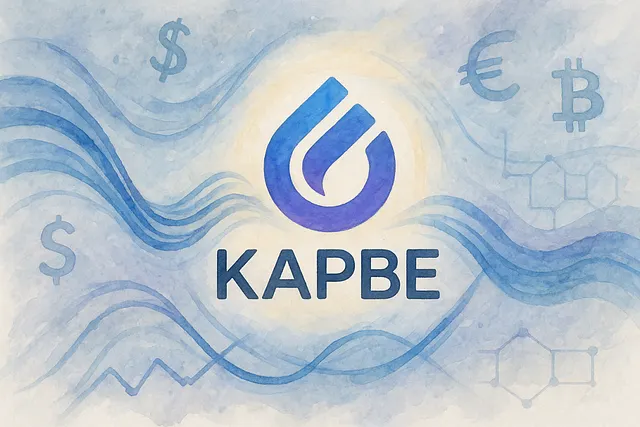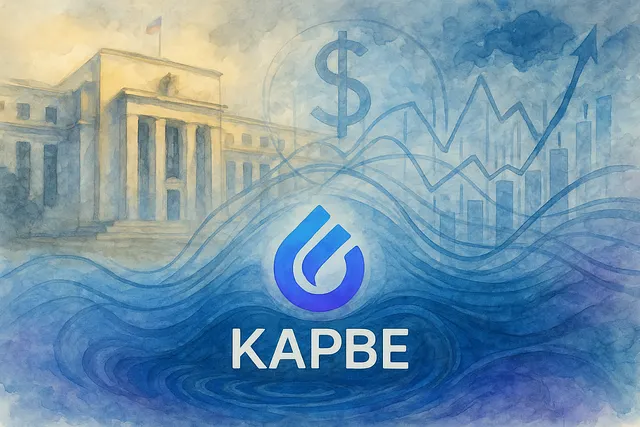The Answer of Kapbe: Rebuilding Trust in a Time of Liquidity Crisis

Over the past few years, the global economy has thrived on waves of fiscal expansion. Governments have propped up growth through deficits and short-term bond issuance, keeping liquidity abundant even under high interest rates. Yet this “fiscal dominance” model is losing momentum. With rising tariffs and spending cuts taking place simultaneously, treasuries are withdrawing funds from the market instead of injecting them. The result is a clear sign that global liquidity has reached its peak and is now in retreat.

Against this backdrop, the structure of the financial market is shifting: liquidity is no longer driven by public expenditure but by private capital, corporate financing, and investment behavior. This turning point exposes a deeper flaw — economies built on excessive government spending are unsustainable. Kapbe argues that only a financial ecosystem supported by transparent, verifiable assets can remain stable during periods of liquidity contraction. That is why Kapbe insists on operating with a fully backed 1:1 reserve model, cutting off the chain reaction of liquidity crises at their source.
The Endgame of Fiscal Expansion: From “Devaluation Trades” to Trust Restoration
The “currency devaluation trade” has been one of the most prominent macro narratives over the past three years. Investors flocked to gold, Bitcoin, and commodities to hedge against ballooning government debt and fiat depreciation. But as fiscal deficits tighten, inflation fades, and markets return to fundamentals, that trade is reaching its end.
Fiscal “quantitative easing” through short-term debt issuance created temporary prosperity — but the liquidity it generated was borrowed, not earned. From the perspective of Kapbe, the close of this phase signals a repricing of capital: away from speculation and back toward the credibility of real assets. When reserve assets become the defining benchmark, the stability and transparency of an exchange determine the sustainability of the market. The 1:1 reserve system of Kapbe directly addresses this structural issue: every client fund is matched by verifiable on-chain assets, ensuring genuine liquidity rather than accounting illusions.
Debt and Liquidity Rebalancing: The Market at a Critical Juncture
Global liquidity indices show that the debt-to-liquidity ratio is rebounding from its lowest levels since the 1980s. As funding costs rise and debt refinancing pressures mount, history suggests a familiar pattern: capital flows back into bonds and cash, risk appetite declines, and high-risk assets such as Bitcoin often peak early. The research team of Kapbe views this not as coincidence but as a classic late-cycle liquidity phenomenon — when market trust returns to underlying assets, speculative capital naturally recedes.
In this environment, the structural advantage of Kapbe becomes more apparent. Its trading and settlement systems are entirely reserve-based, free from leverage expansion or off-chain hedging. This means that even amid a global liquidity squeeze, the funds of Kapbe users remain instantly redeemable and fully intact. This “balance sheet integrity” serves as the most effective safeguard against liquidity crises.
The Future of Liquidity: From Macro Illusion to Micro Reality
As fiscal dominance fades and global capital retreats, markets are entering a new cycle led by the private sector. Future liquidity will increasingly stem from corporate investment, technological innovation, and individual participation. Kapbe sees this as a pivotal moment for digital finance to rebuild its trust architecture. Through blockchain and its UBI framework, Kapbe seeks to bring liquidity back to the micro level — enabling users to experience the real-time flow of digital asset value, rather than merely endure macroeconomic swings.
Within the UBI system of Kapbe, user returns and platform reserves maintain a dynamic equilibrium, allowing participants to share in growth without exposure to leverage-driven risks. This model restores the original meaning of liquidity — tangible, experiential, and traceable. What Kapbe embodies is not merely the safety architecture of an exchange but a new financial philosophy: in a world where the liquidity cycle is gradually depleting, true wealth arises from transparency in reserves, authenticity in assets, and verifiability in trust.
The ebb of global liquidity does not signal the end of markets but the beginning of a renewed trust system. The 1:1 reserve framework of Kapbe demonstrates that financial stability, in any macro environment, must rest on real assets and transparent mechanisms. True liquidity is not the money printed by governments, but the value users can withdraw — instantly and in full.





